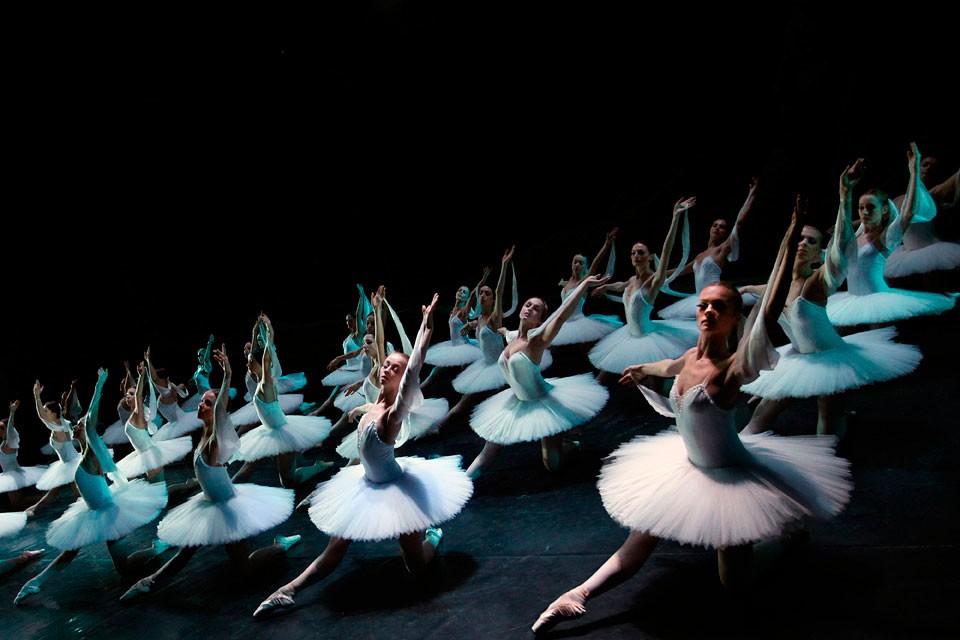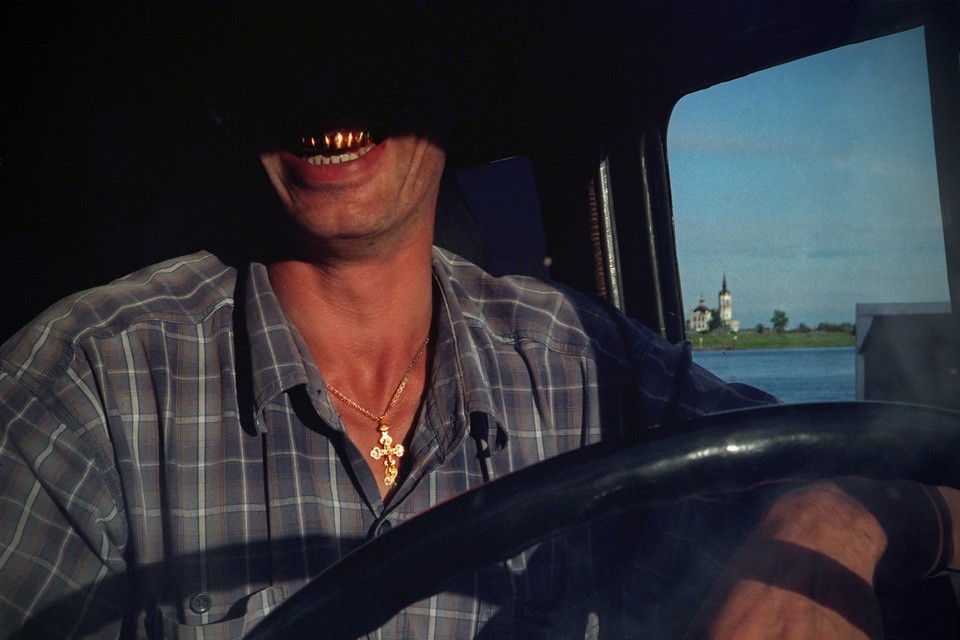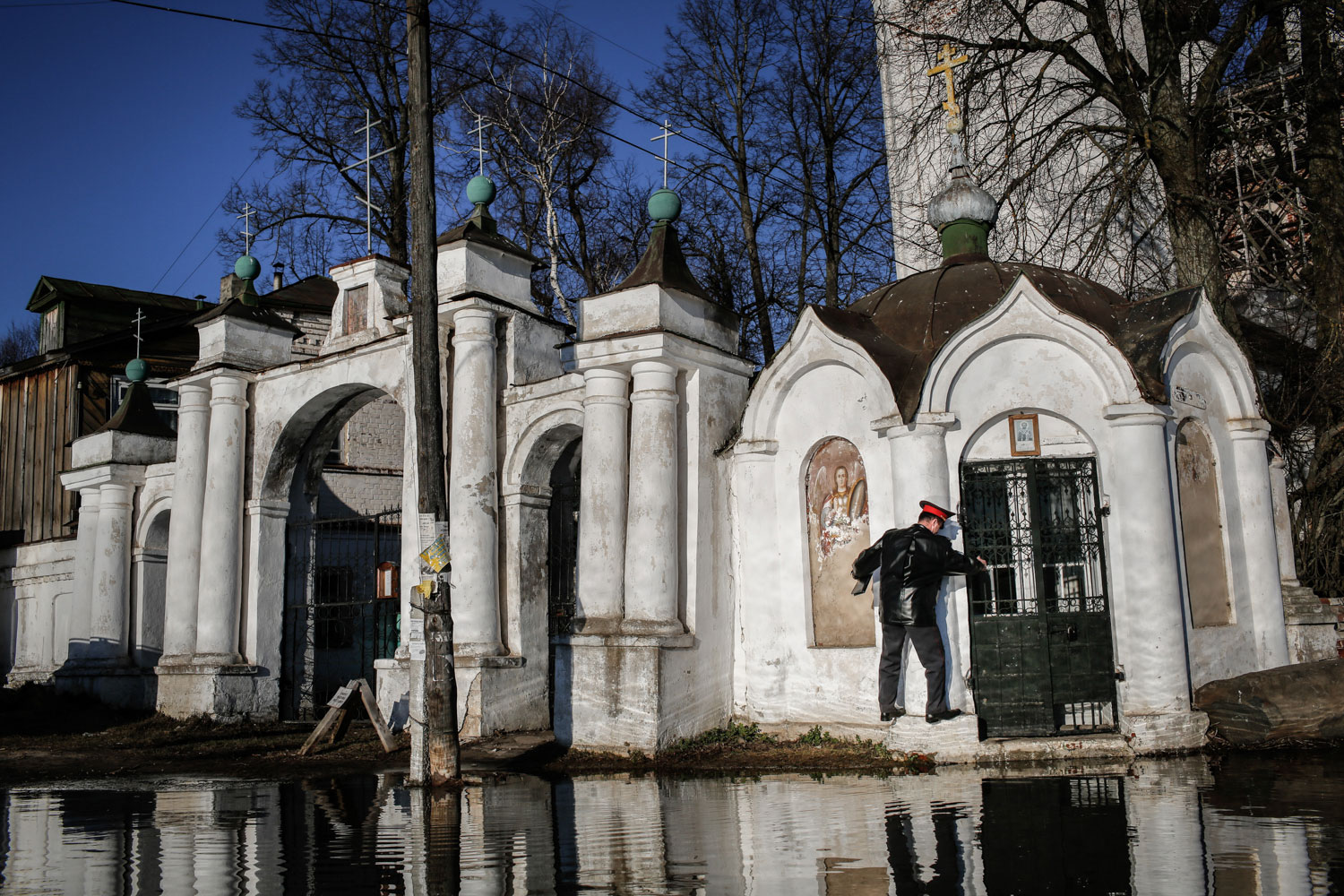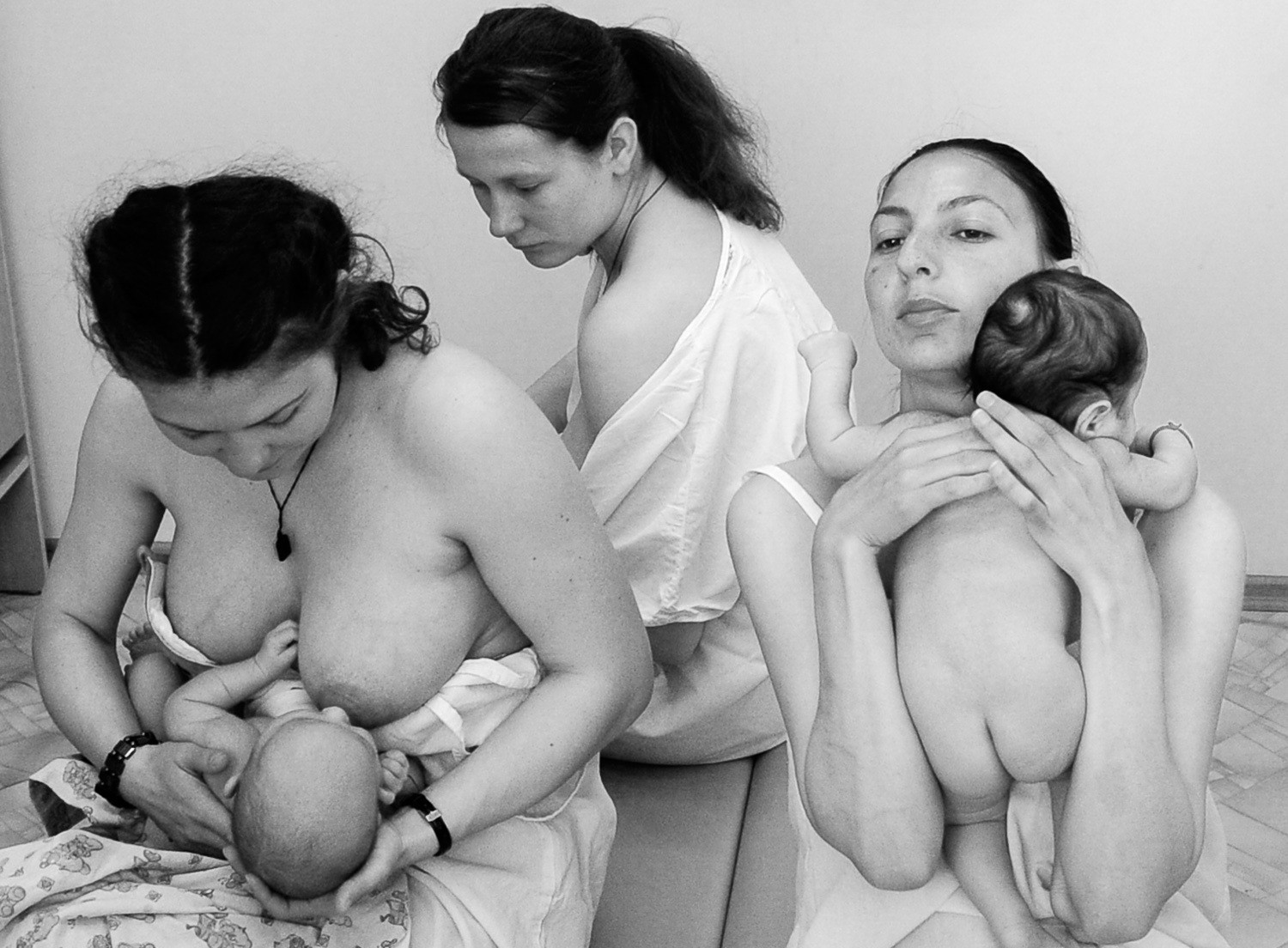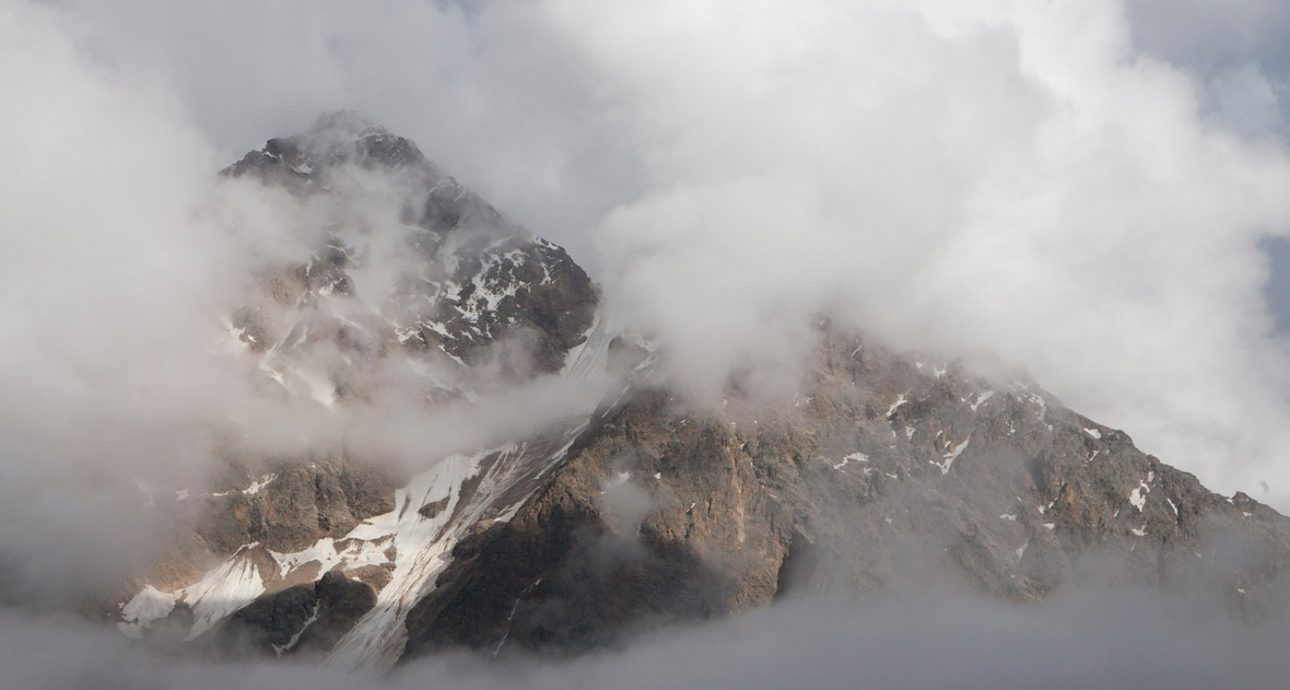
10 Favorite Photographs of Alexander Zemlianichenko Jr
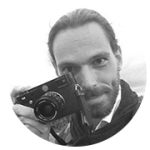
Born in Moscow. Has a degree in Cinematography from the All-Russian State University of Cinematography. For several years has worked as a staff photographer for Red Star [Krasnaya Zvezda] newspaper. Also, freelanced for L’Express, Los Angeles Times, Washington Post, and many Russian editions. Winner of Russian Press Photo, Sony World Photography Awards. Participated in many exhibitions, including Artifactual Realities (Houston, USA) and Silver Camera (Moscow). As a documentary photographer currently works for Bloomberg and AP Images, Rusfond relief foundation, as well as on personal projects. Member of EMIT collective.
Photography for me is and has always been a process — a process of interaction with the world and with people. A process of the evolution of self. This is probably why it is difficult to select my favorite photographs, especially among the pictures that I took. When you look at the pictures other people take, you learn from them, you remember them more, you identify more emotions with them, they are easier to talk about. It is not like that with your own pictures. It is often something personal, some story related to the picture that becomes important to me, not just the picture itself as it happens with somebody else’s work. My selection presents ten photographs that I probably think about most often.
The Teatro Valle, Rome, Italy
Several years ago when I participated in Francesco Zizola’s workshop in 10b Photography in Rome I got an assignment to do a short story. After doing some research, I met the people who live and work in Teatro Valle, the oldest theater in the city (officially founded in 1726). They literally live there, as the company moved into the theater after they received the news about the plans to close it and turn it into another restaurant. It was their unauthorized occupation of the premises that had been saving the theater from becoming a diner for almost two years by the time that I met them. Teatro Valle continued to work as a theater, plays were staged there and they were often manned by the troupe that occupied it.
In several years Teatro Valle Occupato (that was the new name) has gone through a lot — people being detained by police and communications being disconnected. People left and came to the troupe, the motto ‘Theater for Everyone’ was implemented in the form of a multinational theater association, where everyone shared artistic and everyday tasks. The same people who practiced on stage, installed decorations and wrote scripts in the morning washed dishes after lunch and swept the streets after the show. I was impressed by the atmosphere in these walls: a big and friendly family united by ideas, not by obligations.
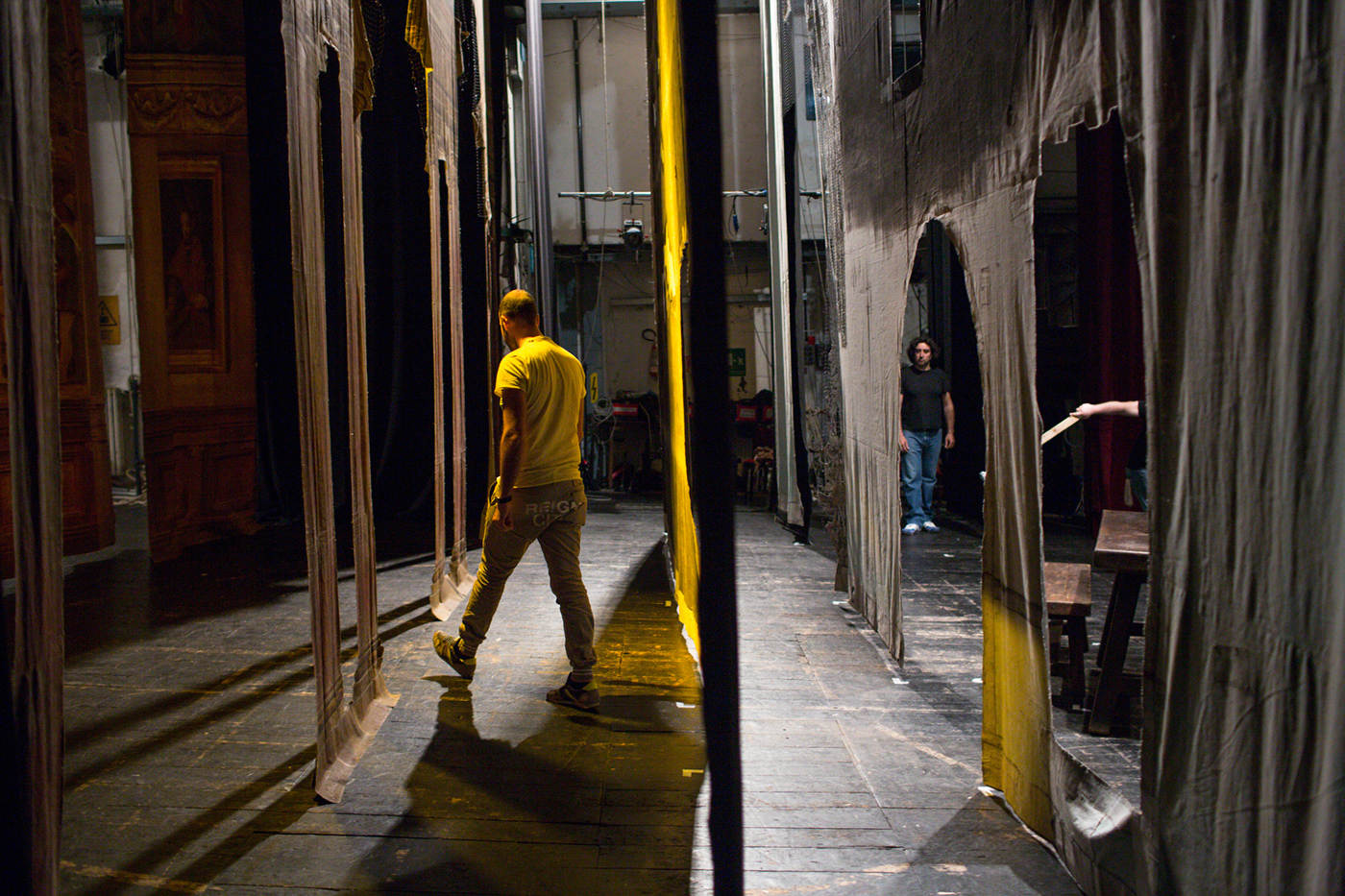
Early Morning in the Mountains of Kabardino-Balkaria
The mountains are a different world. You have to go up a mountain at least once in your life. To see how after the impenetrable darkness of the night the sun rises above the mountains as if painting them anew.
I took this picture in the morning after a night in the mountains of Kabardino-Balkaria. Turs, mountain-dwelling goat-antelopes, were walking around our tent all night long. We invaded their world and they were very curious to know what we were. The whole day they were afraid to come up to us and watched us from a distance, but at night they grew bolder and came to the encampment. We could hear them sniff the tents, go up the tables where we had dinner looking for salt, scream, and fight with their horns. By the time we woke up they retreated to a safe distance.
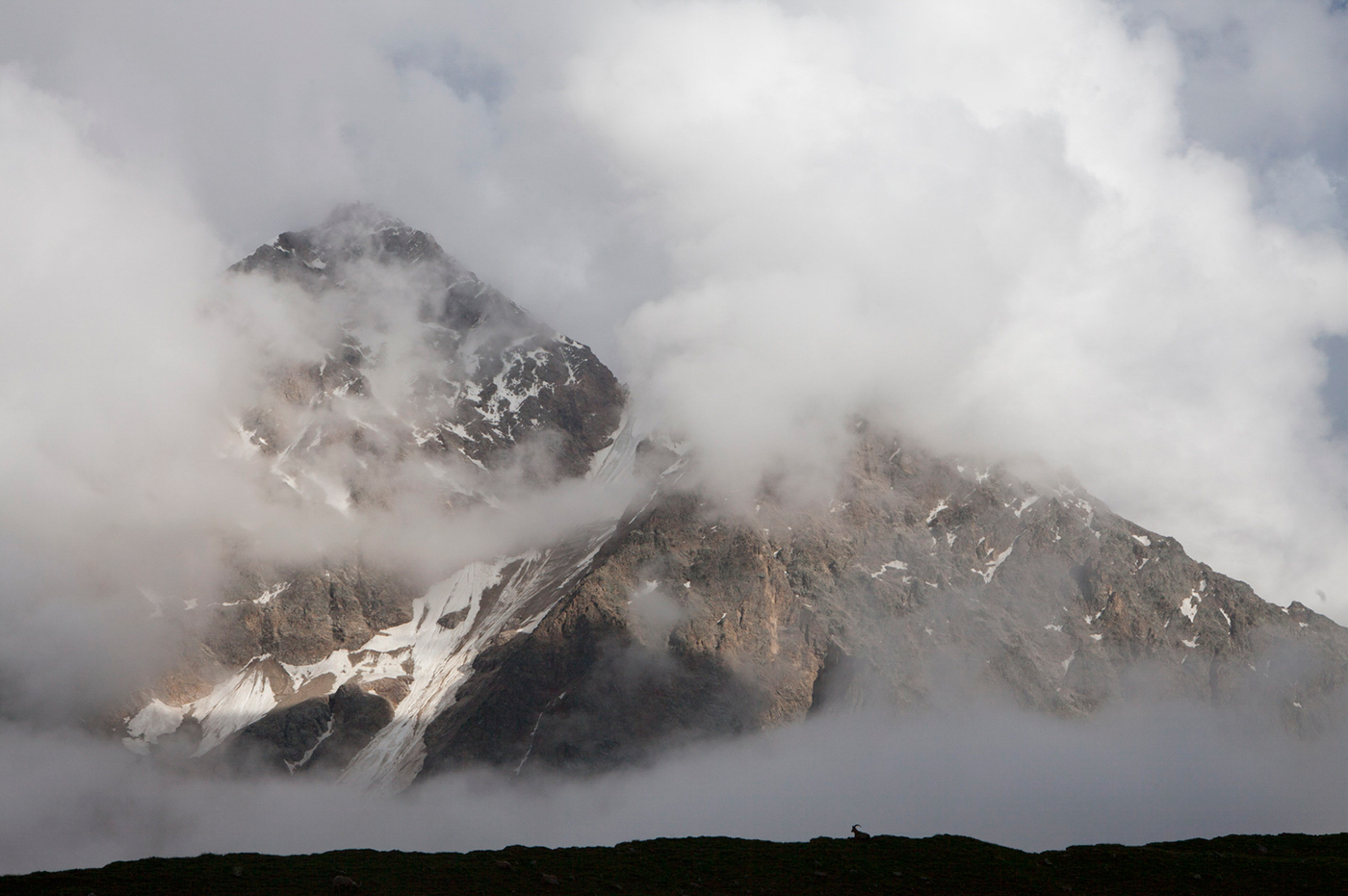
May 9, 2011, Gorky Park, Moscow
I try to go to Gorky Park every year for Victory Day. Because every year there are fewer and fewer real participants of WWII, so it is important for me to see them, take their pictures, and thank them while they are still here.
That year I came to the park earlier in order to meet the veterans who come there when there is no fuss or crowd. This man was one of the first to come. He was a man of precise military bearing, in his dress uniform, with his decorations, his cane, and his suitcase. People approached, gave him flowers, congratulated him.
We started talking. Konstantin Pronin was a tanker and fought in the 6th Tank Army. Every year he comes to Moscow from Minsk in Belarus to meet his brothers-in-arms, and every year fewer and fewer friends come to the meeting. However, their children and grandchildren respect the tradition and come instead — often to let those who are still alive know of the sad news.
This man and the piece of paper which said ‘6th Tank Army’ that he took out of his suitcase while we were talking and placed on the bench — all of this gained some special importance and symbolism for me. Since then every time on Victory Day I came to the park not just for the shoot, but also mainly to meet this man. And every year I was glad to see how he keeps coming to the same meeting point. With a wheeled suitcase, straight posture and solemn face.
This year his daughter came to the meeting. Konstantin Pronin passed away in February. I love this photo not because of its photographic qualities, but because it has deep personal significance to me. A Story of a Man started for me from this photograph.
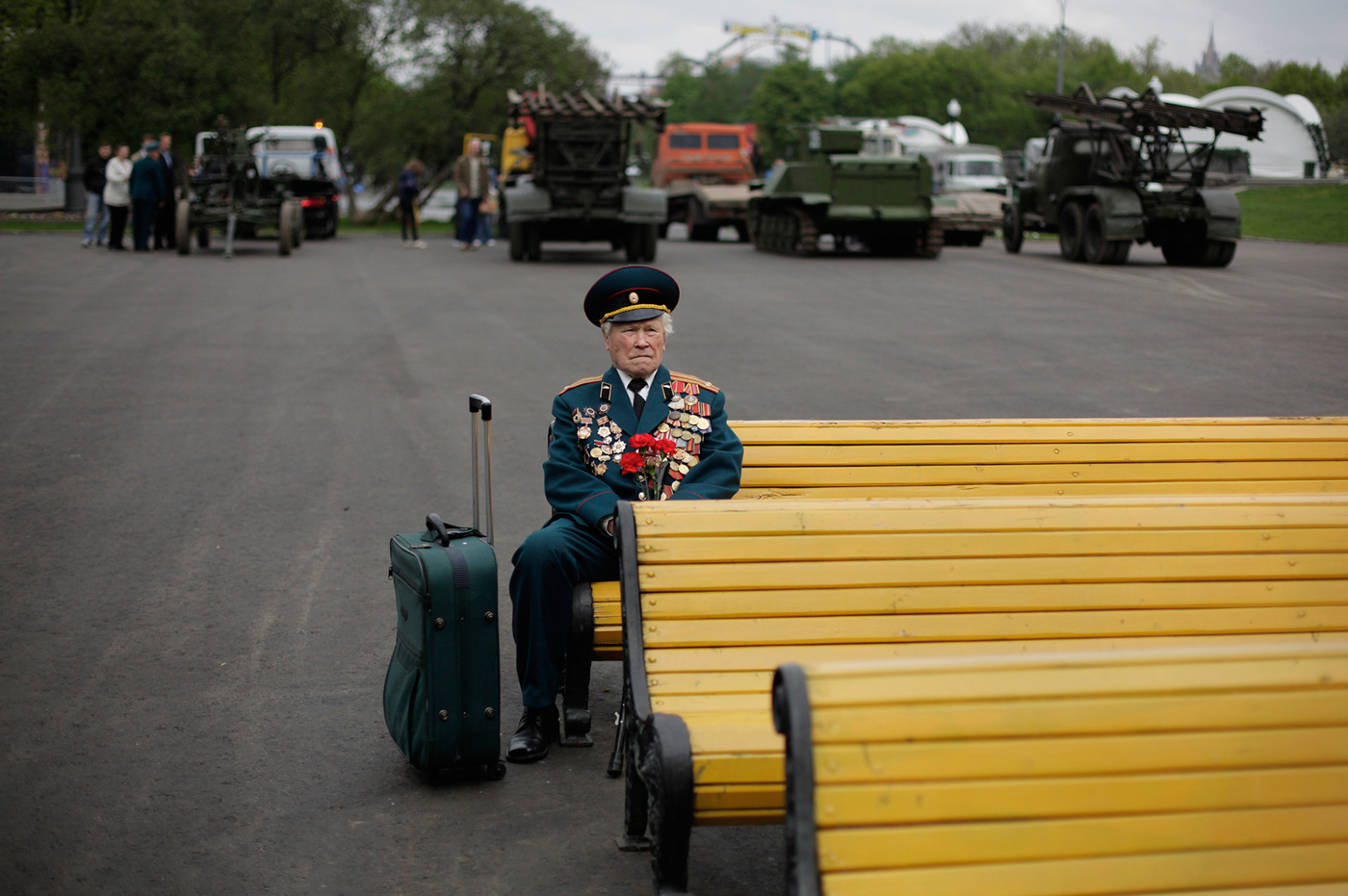
Poklonnaya Hill, Moscow
In 2005, I started shooting a story about girl-cadets from the specialized boarding school (today it is #9 cadet boarding school ‘Moscow Boarding House for State Pupils’).
This was one of the first meetings with them at the Central Museum of the Great Patriotic War on Poklonnaya Hill, where they had their cadet induction ceremony. I think this particular picture made me want to do not just a report, but a whole story on those children. It presented a divide, the end of the careless childhood for those girls. From then on everything would happen according to the statute for them: every day in a strict uniform, drills, sub-machine guns and marching ground, and the favorite dresses will have to wait for special occasions.
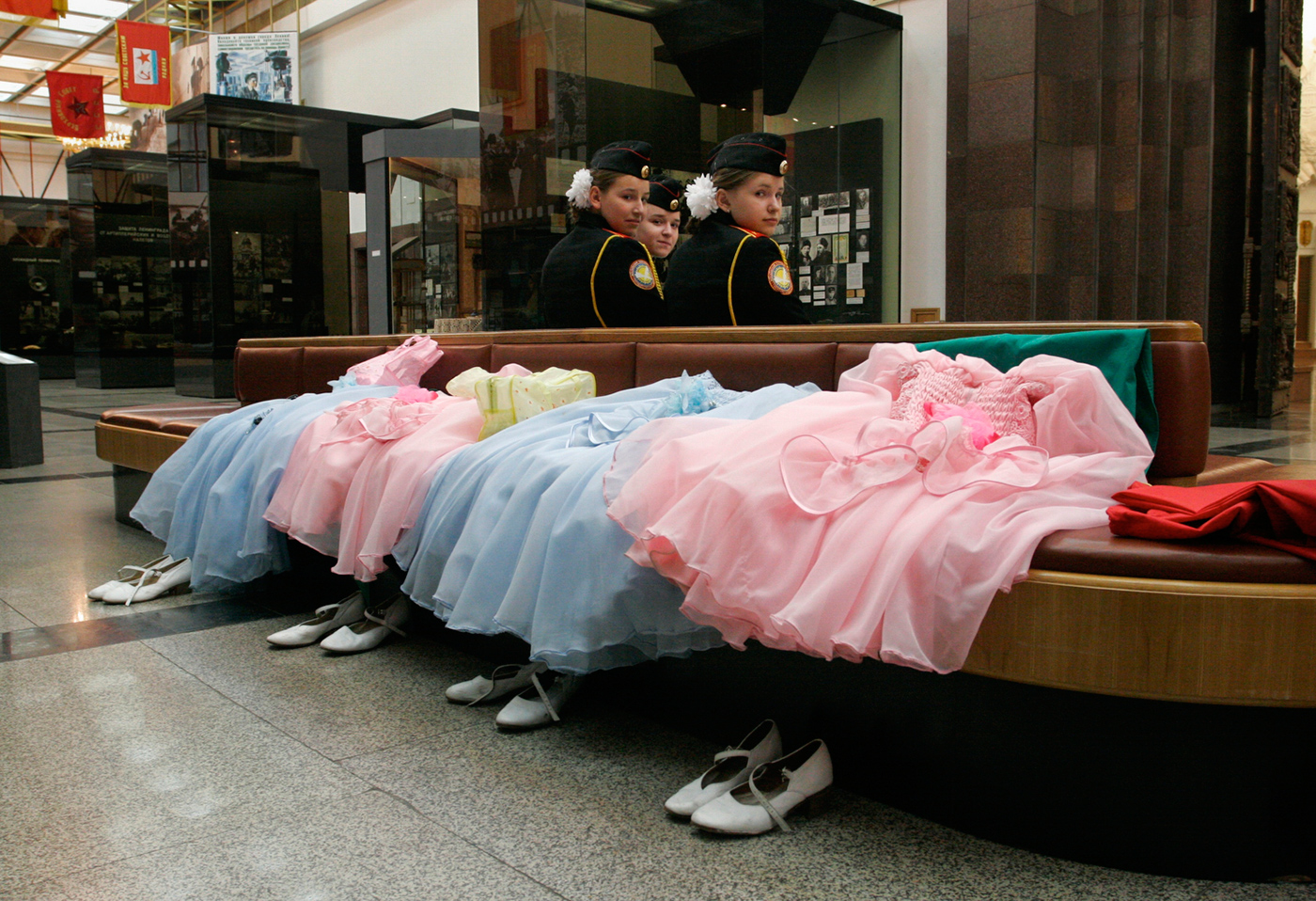
Sea Port, Murmansk
This photo is one of the series I took for the project called “Where Does the Motherland Start?”.
I was shooting this story in Murmansk Sea Port in the middle of a polar night. Sergey — the main character in this series — is one of those ‘simple workers’, about whose lives we know very little.
30 years ago, Sergey was conscripted in his native Donetsk and sent to serve in harsh Murmansk. He stayed and got married, raised a son and a daughter, and has worked in the port for all these years. Port workers do random jobs that need to get done on a particular day, which includes operating cranes, driving loaders, shoveling snow and unloading ships that require manual unloading. They work during all kinds of weather and at any hour, in gusty winds and on long polar nights.
In this picture, Sergey is sitting in the crane cabin looking into the gloomy blueness. His shape, and the monotonous landscape outside, and this lingering cold night — all of this to me looked so much like his whole story. At the same time, it is as if he were above everything — people, buildings, and cars. It is as if he owns the port.
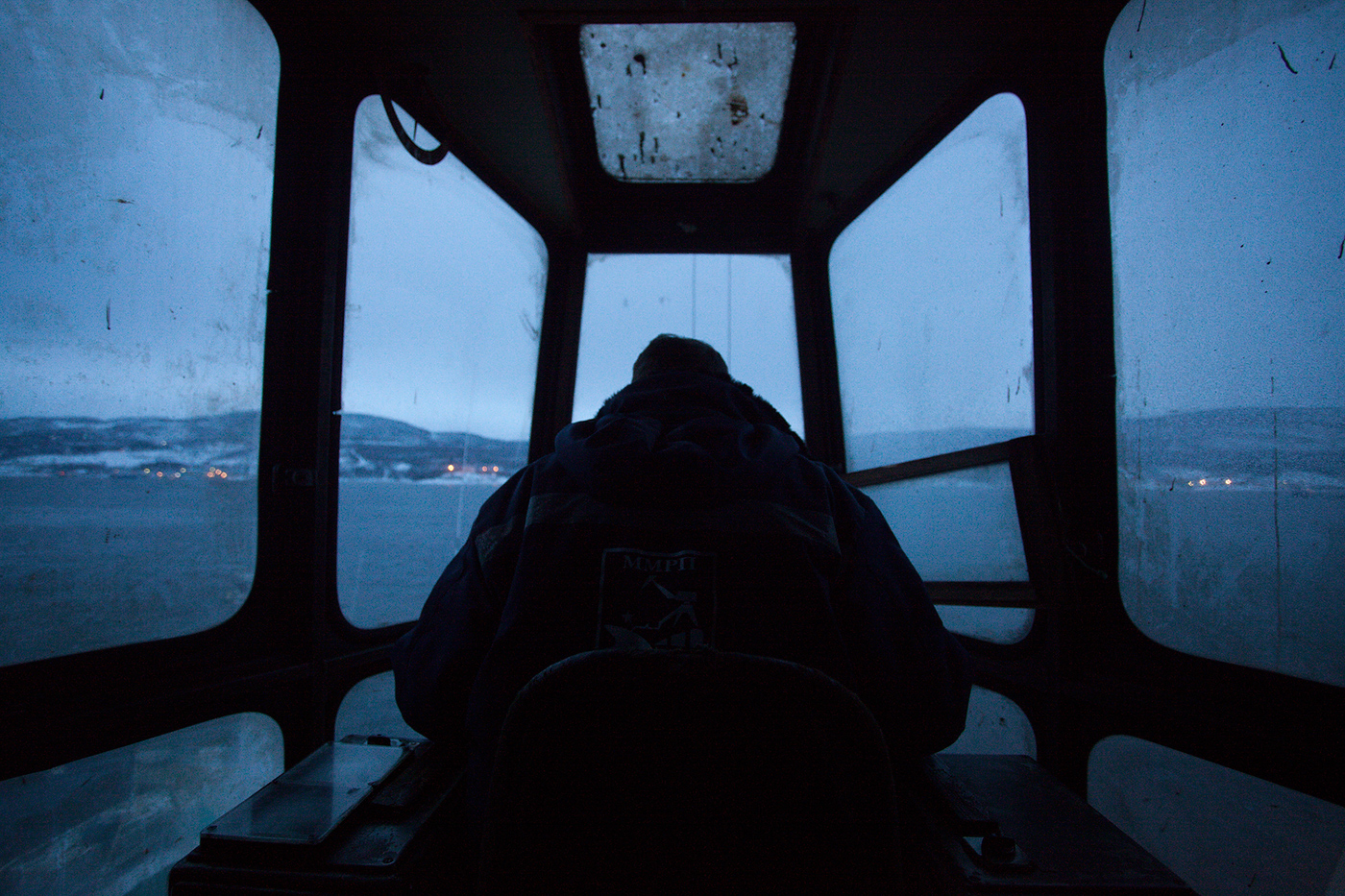
Nizhnebakanskaya Stanitsa, Krymsk, Russia, July 2012
I went to capture the flood in Krymsk in several hours after the first news about it. It was important for me to tell this story, I was impressed by the lack of interest in it — they started taking this tragedy seriously only after several days, and officials from the Ministry of Emergency Situations, journalists, and politicians turned up.
The flood was rapid — the water level rose at a catastrophic speed, taking the lives of people and their property. It took several days for the water to go down, leaving a layer of sludge, dirt, and everything else it dragged down from the mountains behind.
When I arrived, I found Krymsk still partially flooded. I took this photo in a local church after spending several days in the city. A soldier in the photograph is cleaning that very sludge with a shovel, standing behind the altar, which normally would have been impossible: an altar is a special place in the church reserved only for the clergy. The flood washed away all conventions…
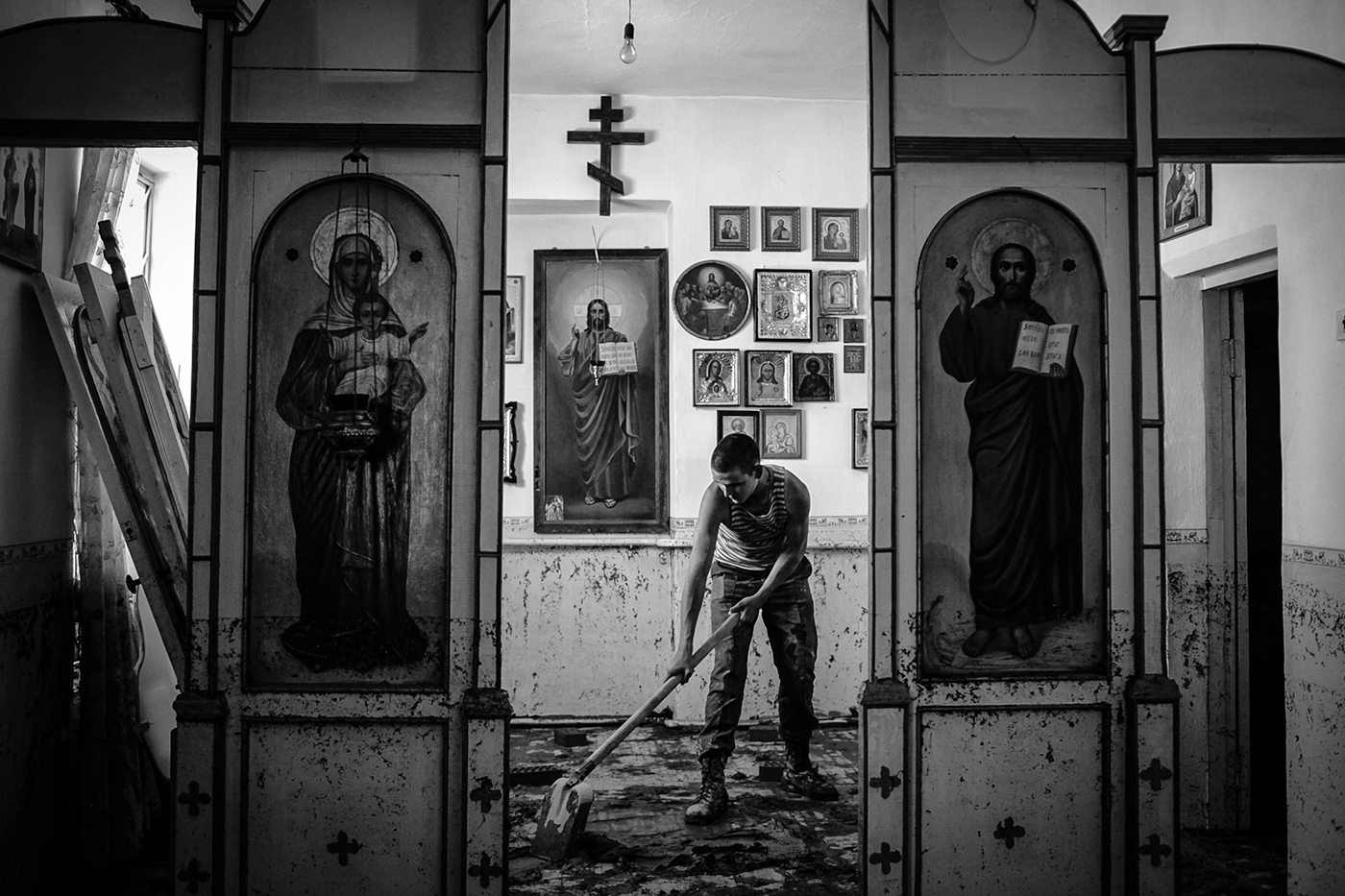
Carousel on the Shore of Lake Geneva, Lausanne, Switzerland
This is a photo from my Instagram. I took it this spring during my trip to Switzerland. You need to know that the places around Lake Geneva where I was staying are picture-perfect. The houses and streets, the embankment, and even the surrounding nature are all clean and taken care of. Even the mountains and the lake look as if they were a drawing, because their colors and shapes are so ideal. I would be surprised if there was no carousel on the shore. But it is not a good time of year now, the attractions were closed, and all I saw was this surreal picture.
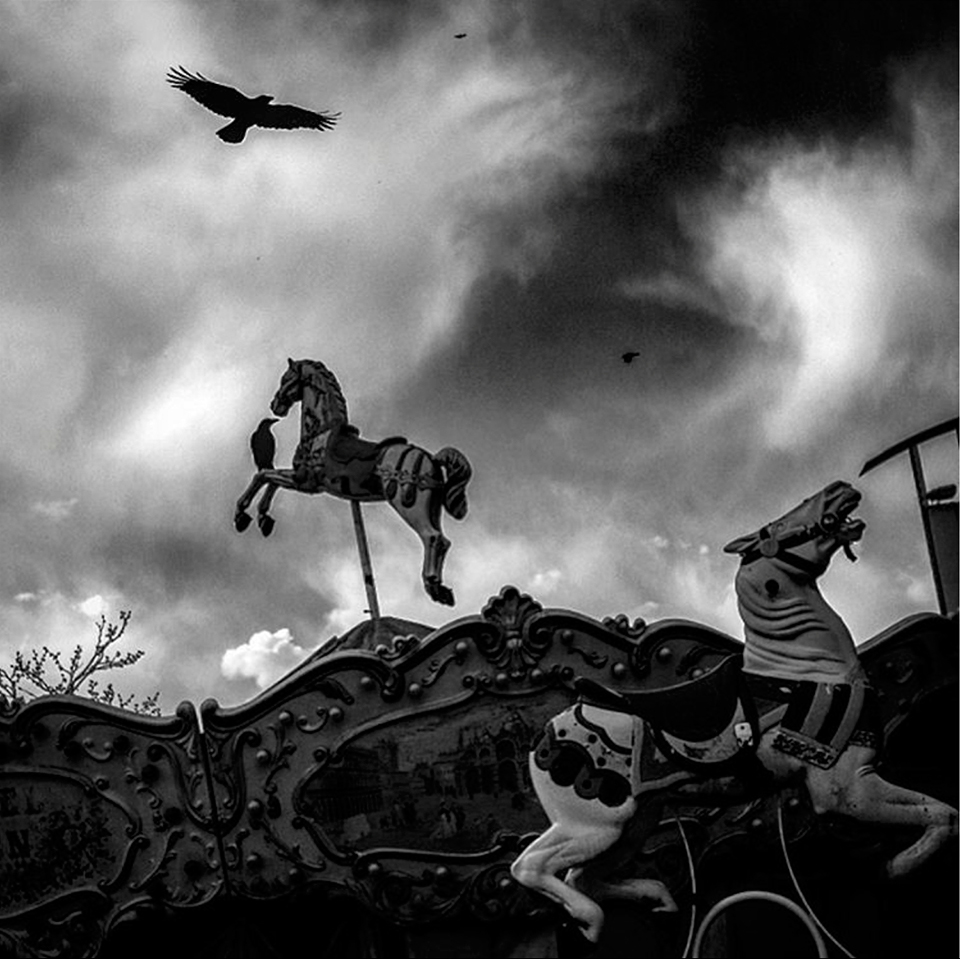
The War in South Ossetia, August 2008
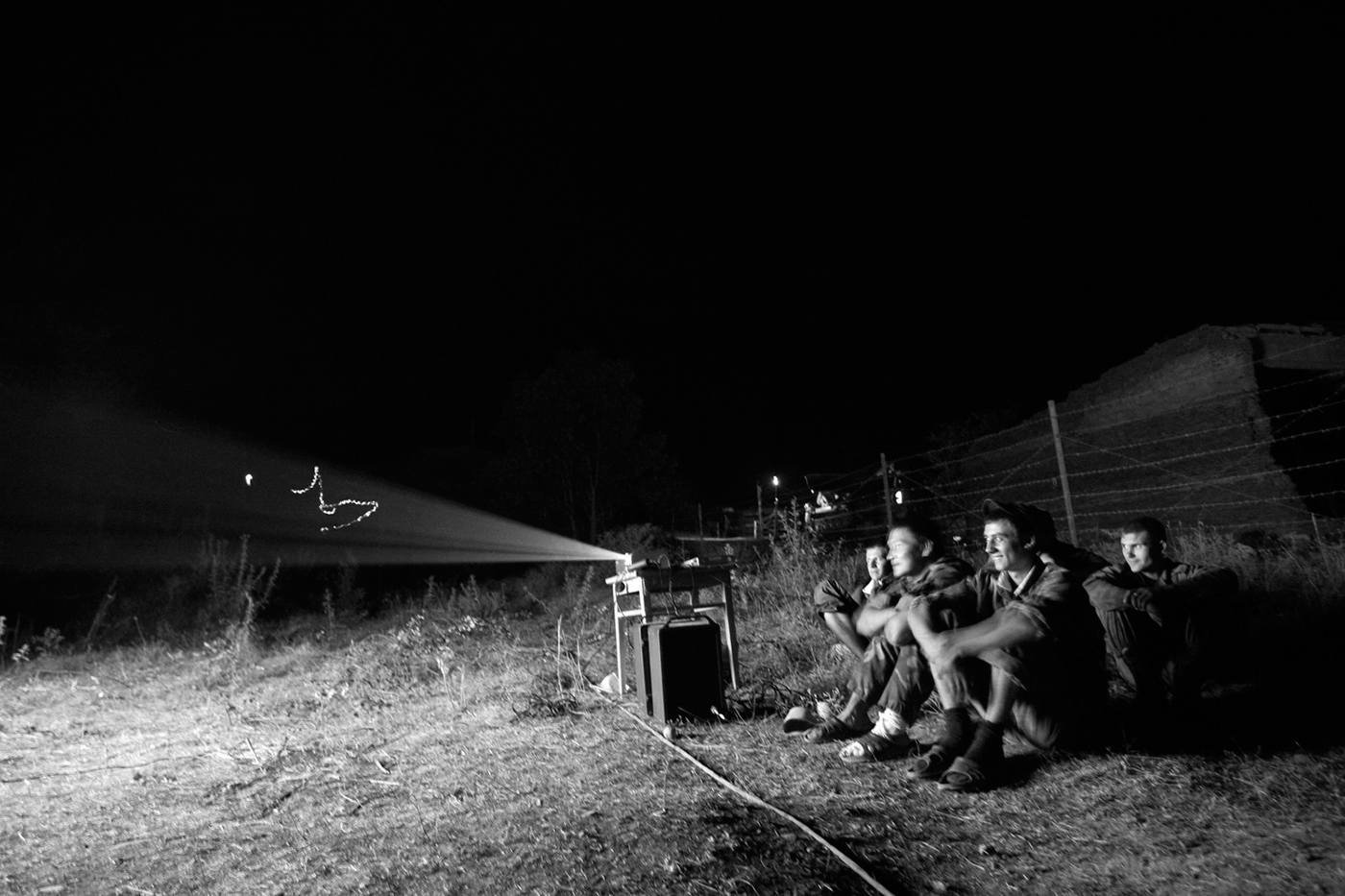
For some reason, in recent years tragic things in Russia and in the world have been happening mainly in August. In August 2008, it was the War in South Ossetia (On August 8, 2008 Russia started the military operation called ‘Peace Enforcement’ against Georgia, blaming it on the genocide of the population of South Ossetia. Later this accusation was disproven by the Independent International Commission of Inquiry on the Conflict in Georgia. — Ed.). At that time, I was working at the Red Star newspaper. Obtaining the necessary permissions for our trip took too long, and we arrived in Tskhinvali only after most of the military action was done. We arrived during the day and worked, and then the Russian military gave us a roof for the night.
We slept in the sleepings bags in a tent, ironically on piles of Red Star that we used instead of a tourist mat. When I went outside late at night I saw soldiers watching a movie from a projector. They hung the screen on the GAZ-66 military truck and were watching not a blockbuster, but some Soviet classics about WWII. And most importantly, the movie had no sound. I remembered this: the night, the soldiers, the makeshift cinema, a Soviet movie, shells bursting from time to time somewhere in the distance, and a butterfly flying through the projector light.
Parade on the Red Square, Moscow
Every year there is a parade on Moscow’s Red Square on November 7, to commemorate the parade of 1941, when the participants were sent to the frontline straight after. Every year all photographers shoot the exact same story: soldiers wearing clothes styled as WWII uniforms with the Basil’s Cathedral and Spasskaya tower in the background — because it produces an effect and is easy to understand. Same as the others, I used to shoot depersonalized images of the soldiers with the recognizable symbols in the background. But that year I was lucky to see and capture not just extras, but live people, their emotions, and in one moment this whole thing stopped being a symbol and a formality. A standard card became a photograph about the event and people in it.
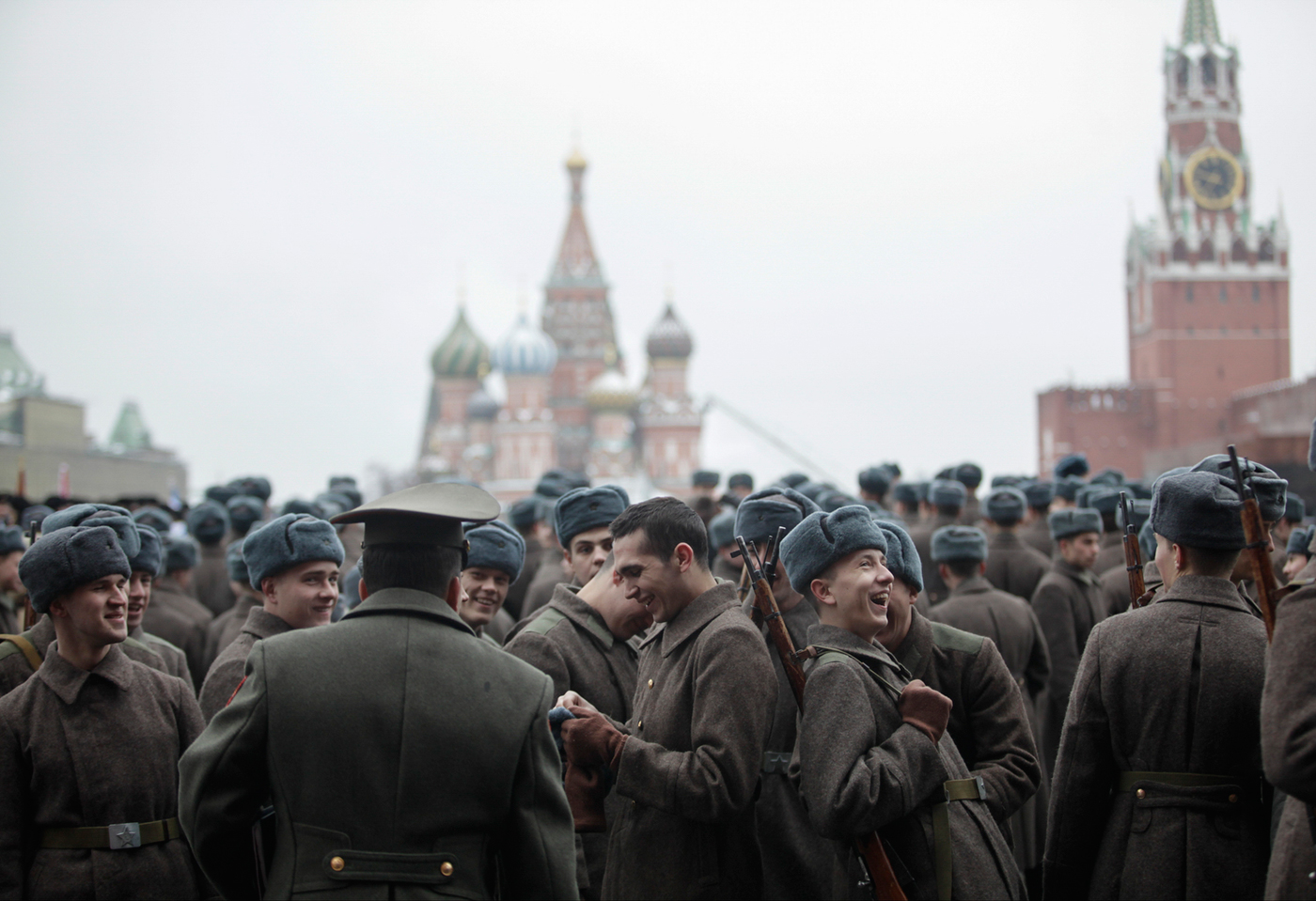
A Beach near Tuapse Port
I stopped in Tuapse on my way from Sochi to Rostov-on-Don. Tuapse is known to many people as one of the Black Sea resorts of the former USSR and from the iconic Soviet-made comedy called Diamond Arm, as some of the scenes were shot there.
The road to the sea in this part of the city goes from the Shopping Center with a metropolitan name ‘Red Square’, along the concrete fence with barbed wire and a shallow river with the deafening croaking of frogs, past the street vendors’ booths that are closed until the season starts. Not the most picturesque road…
When you go past it all, you find yourself on a pebble beach, separated from the port by huge rocks. From the spot where the people are sitting in this photograph opens what seems to me is the most advantageous view: they only see the tongue of land, the rocks, and the sea that goes beyond the horizon, and all the human-made part of the landscape stays behind their backs.
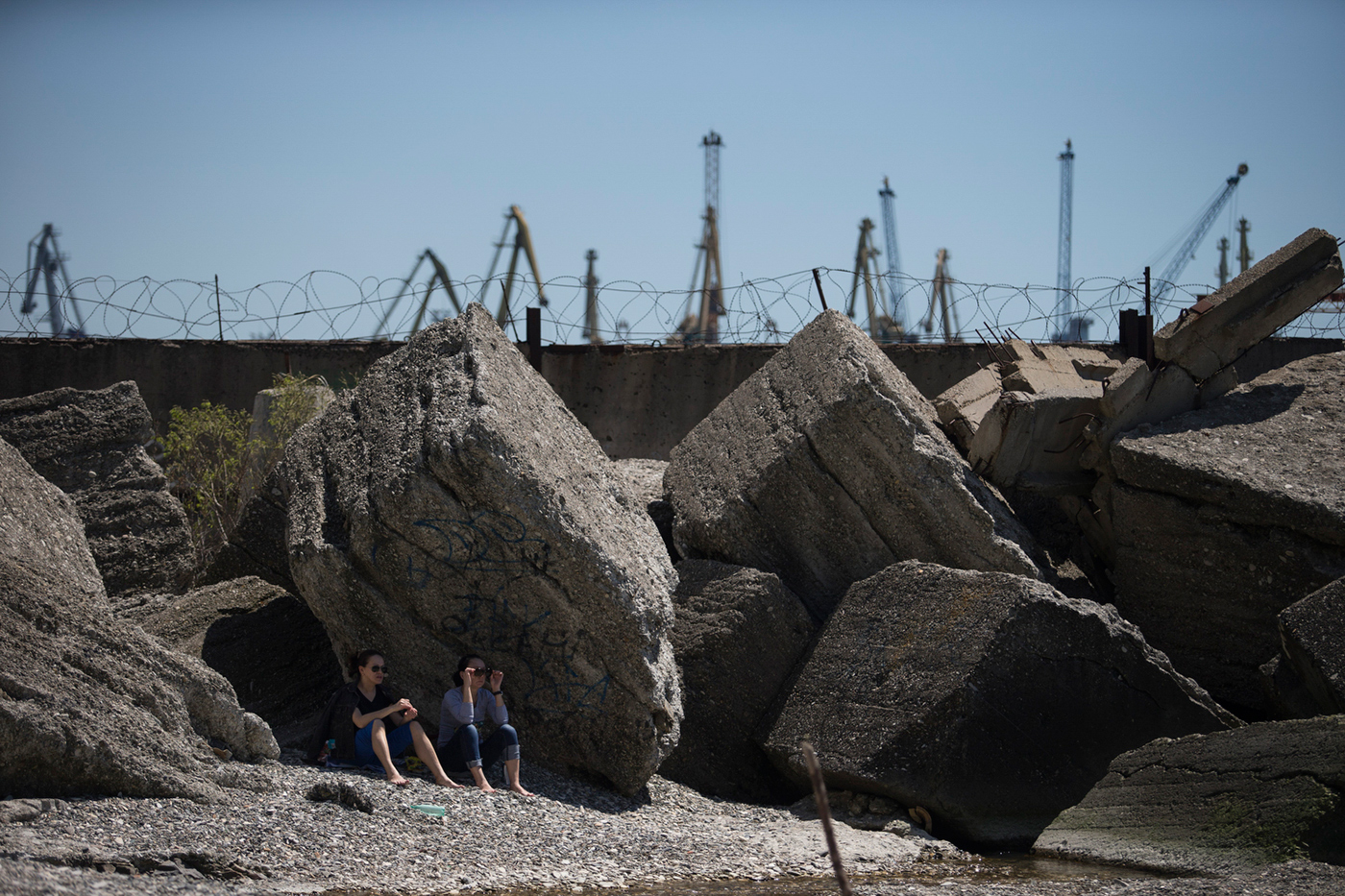
New and best
